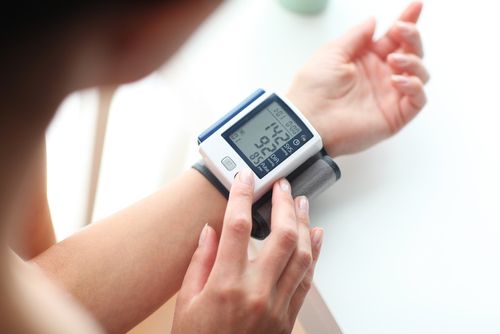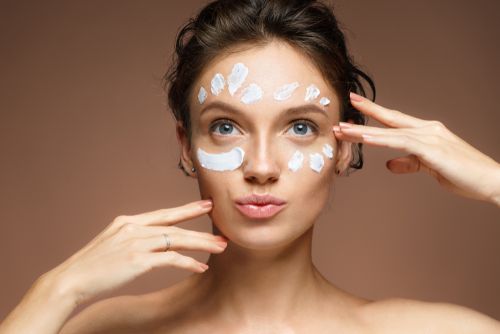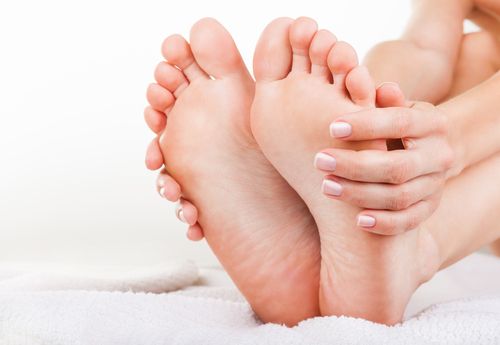 Written by Mike Price, OT
Written by Mike Price, OT
While most people know that diabetes can cause adverse effects on the kidneys, heart, eyes, blood vessels, and nerves, fewer are aware that diabetes also often affects the skin.
However, changes with the skin are frequently the first symptom of imbalanced blood sugar, and are often among the most common complaints of people living with diabetes.
A number of skin disorders disproportionately affect those with diabetes, including:
Monitoring your blood sugar levels daily combined with proper nutrition, exercise, rest, and medicine advised by your doctor will be your best defense in maintaining healthy skin.
However, there are a number of additional tips and tools that can help you promote healthy skin when you’re living with diabetes.

Maintaining clean skin and keeping it dry is one of the best ways to avoid diabetic skin problems.
Although keeping certain areas of the skin moist is another major concern for diabetics, what we mean by keeping the skin dry is to make sure that the darker and warmer areas such as under the arms and between the toes stay dry. Keeping these places dry and clean is important to avoid fungal and yeast infections.
Use gentle or natural skin cleansers along with soft bath mitts, loofahs, and back brushes to attend to hard-to-reach areas. Take advantage of portable and disposable body cleansing wipes when you’re on the go or away from home, ensuring cleanliness to prevent skin problems.
Never use very hot water when bathing, as the lack of nerve sensation for some diabetics can lead to accidental burns.

If you have diabetes, you are also at a higher risk for hypertension.
Blood pressure that is consistently too high will adversely affect the skin’s integrity, just as it negatively impacts other parts of the body.
Keeping track of daily or weekly blood pressure readings will help you to know when imbalances occur, and to talk to your doctor about treatment plans.
As the largest organ of the body, the skin is often involved when other medical conditions are present.
Following pharmaceutical protocols prescribed by your doctor along with regular exercise will help control diabetes and blood sugar levels, while it also improves cardiovascular function and blood pressure. Regular movement encourages more blood flow to the skin, bringing needed nutrients, as it cleanses out toxins.
Monitoring your blood sugar levels daily combined with proper nutrition, exercise, rest, and medicine advised by your doctor will be your best defense in maintaining healthy skin.
However, there are a number of additional tips and tools that can help you promote healthy skincare when you’re living with diabetes.

Drinking water as well as any other beverages that don’t include sugar or caffeine, helps to keep the skin healthy and hydrated.
Along with improving your health in all ways, research has indicated that people who drink at least 32 ounces of water a day are less likely to develop diabetes or high blood sugar problems than folks who drink less than 16 ounces a day.
Don’t wait till you feel thirsty to drink water, as that sensation indicates you’re already dehydrated, and being dehydrated initiates vasopressin production, a hormone that encourages the liver to produce more glucose.

Diabetic skin is prone to dryness and cracking, especially when blood sugar levels are allowed to get too high for too long. Making moisturizing your face and body will help tremendously in dry skin prevention, with repetition being the key to success.
Utilizing creams and lotions targeted for diabetes is recommended, as these formulas are created specifically with diabetic skin in mind. Specialized ingredients promote hydration, and ensure moisture is locked-in to provide the best results.
Moisturizing cream products, especially those designed for the feet, are deeply penetrating, delivering helpful lipids and other hydrating nutrients to soften dry, cracked, or scaly skin, wherever it appears on the body.

When you’re living with diabetes, it’s important to take certain precautions in both cold weather and hot weather times of the year in order to protect your skin.
Colder winter months require using a humidifier to keep the air from getting too dry inside your home or office, and you may find that you need to double-down on your moisturizer during these times.
In hot summer weather, never go outdoors without sunscreen. While this is an important tip for all types of weather, it’s especially important to remember during the warmer months when more skin is exposed and people are more likely to be outside.
Additionally, make sure to always follow up any sun exposure to your skin with a good aloe moisturizer. This will not only help hydrate your skin after drying it out in the sun, but it also provides a pleasant cooling effect that can be really nice for hot days.

Because the feet of diabetics are particularly vulnerable to problems, it is crucial that daily foot checks are performed to ensure there are no blisters, small cuts, splinters, or other areas of concern.
People living with diabetes sometimes experience nerve damage, especially in the feet, making it hard to sense heat or pain, and the slower blood circulation often associated with diabetes can make small injuries slow to heal, and more prone to infection.
Utilizing diabetic socks will help to reduce these risks, as they provide comfortable compression to promote healthier circulation in the feet and legs. And healthier circulation translates to healthier skin.
They also highlight unique design features that are especially helpful for diabetics, such as non-binding, non-elastic cuffs, seamless toe closures, and specially formulated materials that wick away moisture.
Another comprehensive approach to remind those living with diabetes to take care of their feet is the Salk Diabetic Foot Care Starter Kit. This complete kit includes diabetic socks, moisturizing skin cream, and a cleansing soap bar to provide everything a diabetic needs for healthy, functional feet.

The most important vitamins for healthy skin are Vitamin, A, C, E, D, K, niacin, pantothenic acid, choline, & folic acid, so it’s imperative that you make sure you’re eating a healthy diet full of leafy greens, healthy fats, and lean protein.
The best sources of most of these important vitamins are fruits and vegetables, so load up on produce, and talk with your doctor about what fruits are safe for you. While most dried fruits are loaded with sugar, most berries can be safely ingested by diabetics without raising blood glucose levels.
Eliminating saturated fats, trans fats, and sugars, and reducing intake of junky, low nutritional foods is a must for healthy skin, as well as for a healthy body and mind. Nutrition found in whole grains, fresh vegetables, and certain fruits will feed the skin and the rest of the body for healthier outcomes.
For anyone living with diabetes, it’s important to understand that taking care of the skin will be a major component of staying as healthy as possible overall.
Elevated blood sugar, poor circulation, nerve damage, and loss of sensation can all combine to raise the risk of injury, slow wound healing, and infection.
We invite you to use the tips provided in this article to protect and treat diabetic skin, alleviating a wide range of problems that often plague those with this condition.
If you liked this article, be sure to check out our other educational resources to help with all kinds of conditions at Caregiver University.

Co-Founder of Rehabmart and an Occupational Therapist since 1993. Mike has spent his professional career working in multiple areas of Occupational Therapy, including pediatrics, geriatrics, hand therapy, ergonomics and inpatient / outpatient rehabilitation. Mike enjoys writing articles that help people solve complex therapeutic problems and make better product choices.